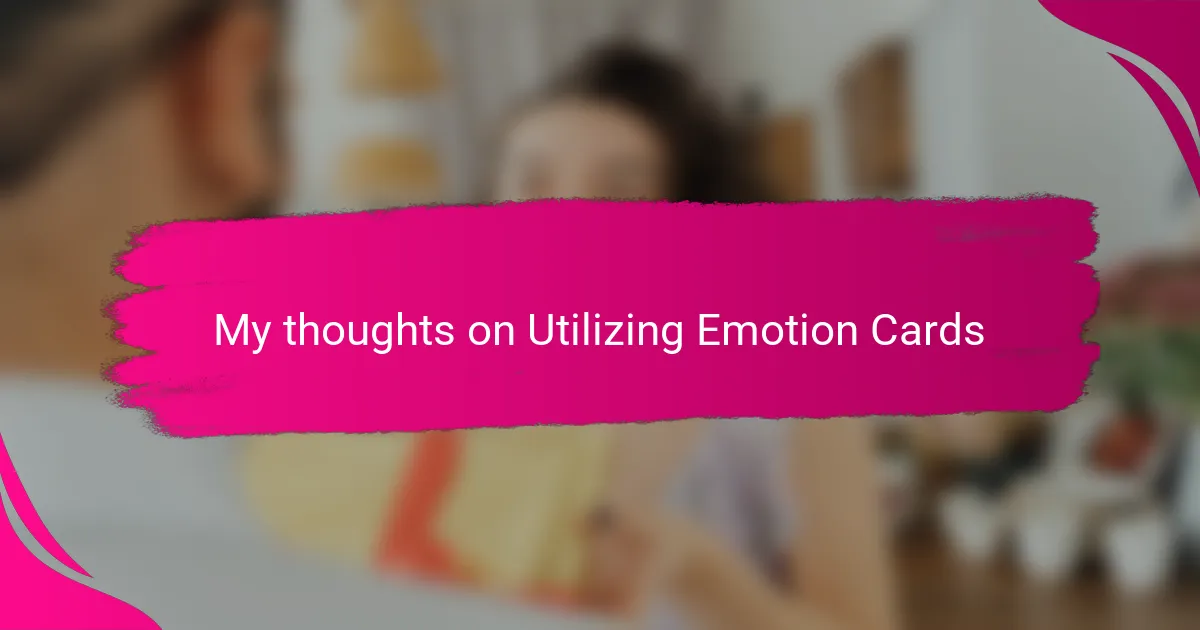Key takeaways
- Emotion cards help children identify and express their feelings, facilitating emotional communication and understanding.
- Introducing emotion cards during calm moments and integrating them into daily routines fosters familiarity and comfort.
- Using emotion cards can boost emotional vocabulary and empathy, encouraging children to reflect on their feelings and understand others.
- Celebrating small uses of emotion cards and making the process playful encourages open emotional expression without pressure.
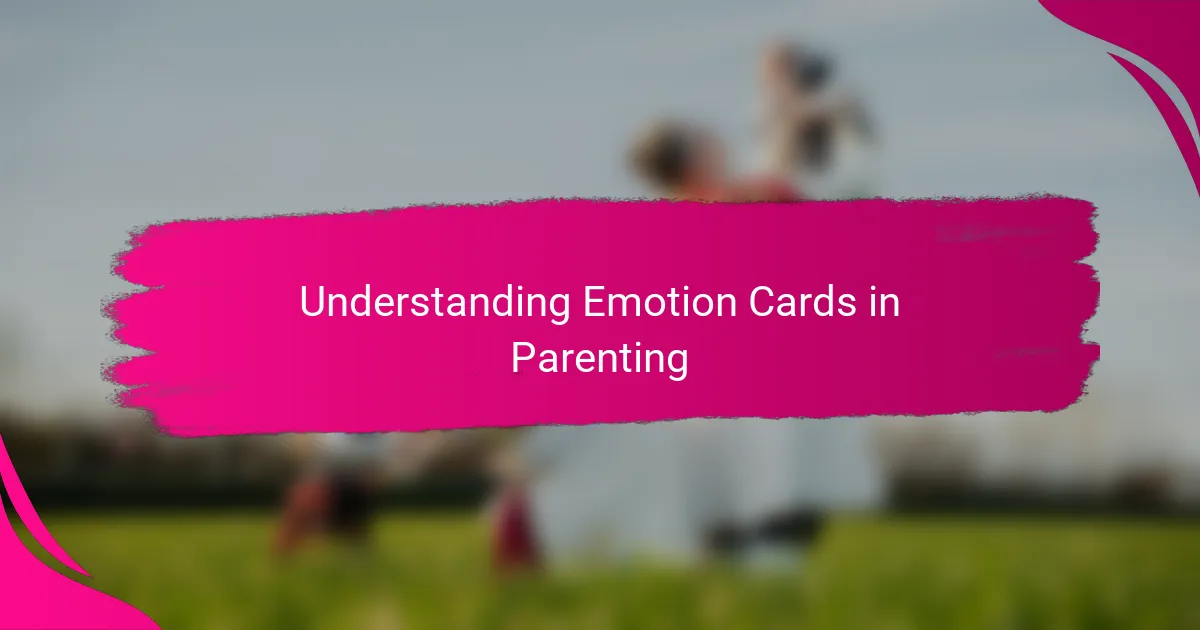
Understanding Emotion Cards in Parenting
Emotion cards, to me, serve as simple yet powerful tools that help children identify and express their feelings in ways words sometimes fail. I’ve noticed that when my child struggles to name emotions like frustration or sadness, holding up a card with a face or word can be a gentle nudge toward understanding what’s going on inside. Have you ever watched a child’s eyes light up with relief simply because they can finally say, “I’m scared” instead of just crying?
In my experience, these cards open up a safe space for conversations that might otherwise feel overwhelming. When I use them during daily routines or tense moments, they become more than just flashcards—they’re bridges to emotional connection. Don’t you think it’s remarkable how a small image can invite honesty and vulnerability from your little one?
Of course, understanding emotion cards also means recognizing their limits. It’s easy to fall into the trap of expecting kids to neatly categorize their feelings on command. But feelings are messy, and these cards are starting points, not complete answers. I’ve learned to use them as invitations to explore, rather than checklists to complete.
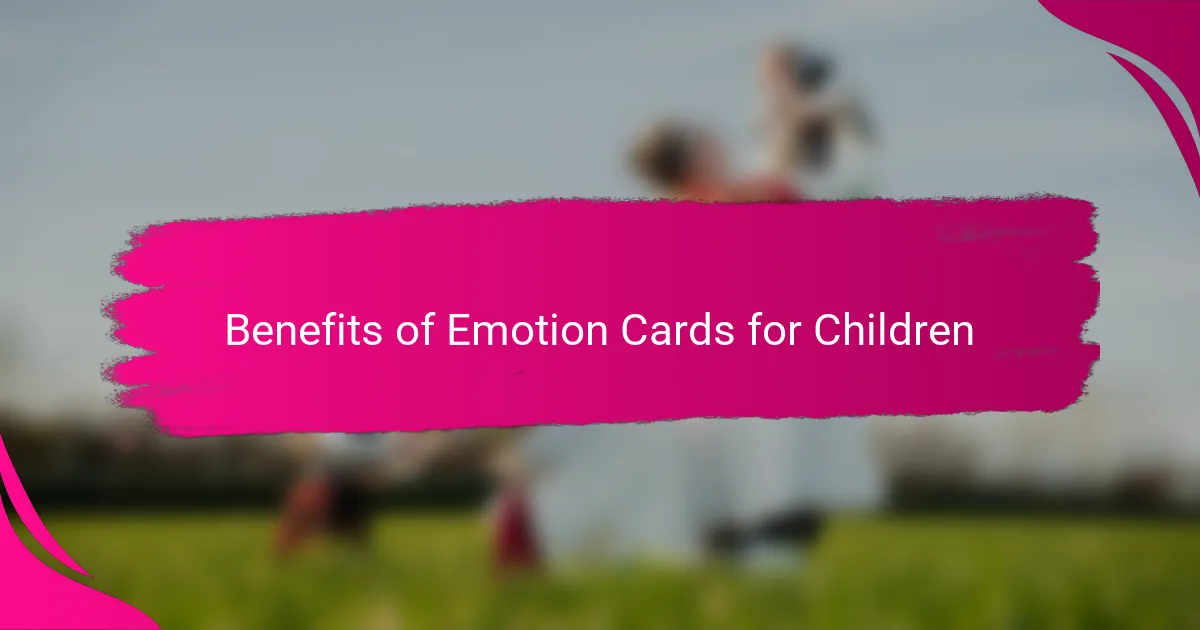
Benefits of Emotion Cards for Children
One benefit I’ve observed is how emotion cards make it easier for children to pause and reflect. Instead of reacting impulsively, my child often stops to look at a card, which helps them slow down and consider what they’re really feeling. Isn’t it amazing when a simple card can turn a moment of chaos into a moment of calm?
Emotion cards also seem to boost children’s emotional vocabulary. I remember how my daughter used to just say “bad” whenever she felt upset, but after using these cards, she started naming her feelings—like “disappointed” or “embarrassed.” It felt like watching her emotional intelligence bloom right before my eyes.
Lastly, I think these cards help build empathy. When we look at all the different emotions together, my child begins to understand that everyone feels these things sometimes. Have you noticed how recognizing emotions can lead to kinder, more thoughtful interactions? That, to me, is one of the greatest gifts emotion cards offer.
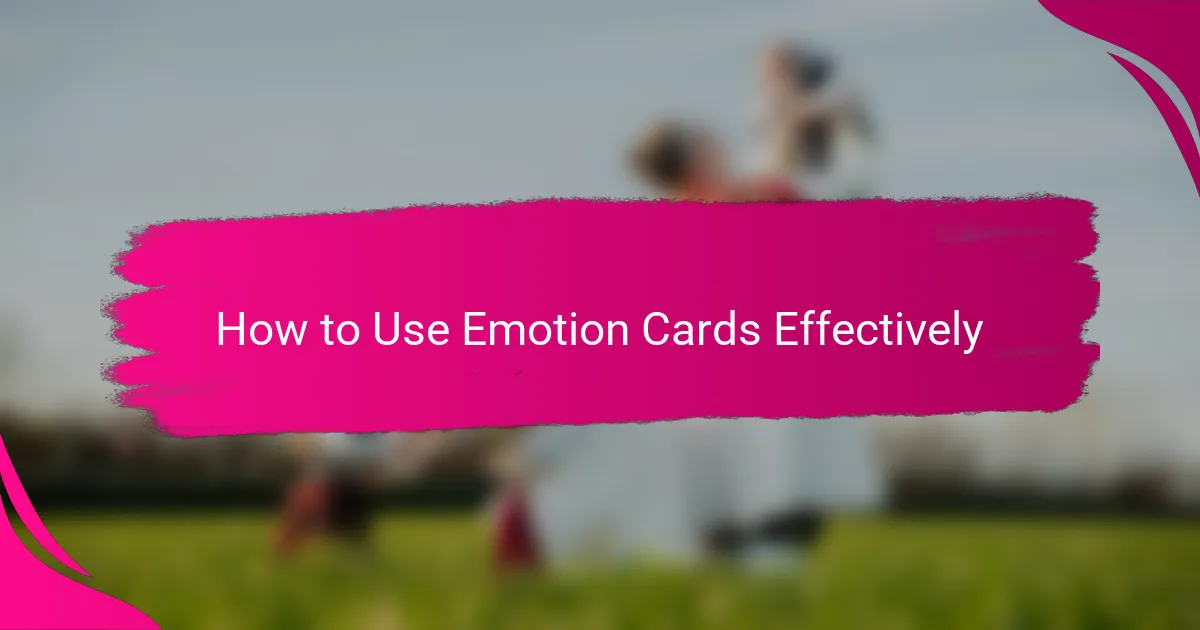
How to Use Emotion Cards Effectively
What’s worked best for me is to introduce emotion cards during calm moments rather than waiting for a meltdown. When my child is relaxed, we’ll casually look through the cards together, talk about the faces, and share times we felt those emotions. That way, the cards become familiar friends instead of quiz questions during stress.
I also found it helpful to keep the cards within easy reach—in the living room, the car, or even the kitchen. When a strong feeling bubbles up, my child can grab a card or I can hold one up, making it easier to put words to what’s happening inside. Have you noticed how having the cards handy turns emotional check-ins into quick, natural habits rather than complicated tasks?
Sometimes, I ask open-ended questions like, “What made you pick that card?” or “Can you tell me more about feeling that way?” These moments invite my child to explore emotions beyond the surface and show that it’s okay to take time understanding feelings. Don’t you think children learn best when they feel heard, not rushed?

Common Challenges and Solutions
One challenge I’ve faced with emotion cards is when my child isn’t quite sure which card matches what they feel—it’s like the feelings get tangled up. I remind myself that this confusion is totally normal because our emotions don’t always fit into neat boxes. Have you ever noticed how kids sometimes point to a card just to get a conversation started, even if it’s not exactly the “right” emotion? That moment often opens the door for deeper talks.
Sometimes, resistance pops up—my child might ignore the cards or see them as a game rather than a tool for sharing feelings. I’ve found that gently modeling how I use the cards myself, like saying “I’m feeling tired” and pointing to the card, helps lower that barrier. Don’t you think when parents show vulnerability first, it invites kids to follow?
Another tricky part is keeping the practice consistent amidst busy schedules. There have been days I simply forget to pull out the cards or feel rushed to use them. To solve this, I’ve started tying emotion cards into daily rituals—like bedtime chats or after-school wind-downs—so it feels less like a task and more like a natural rhythm. What routines in your day could easily include a quick emotional check-in?
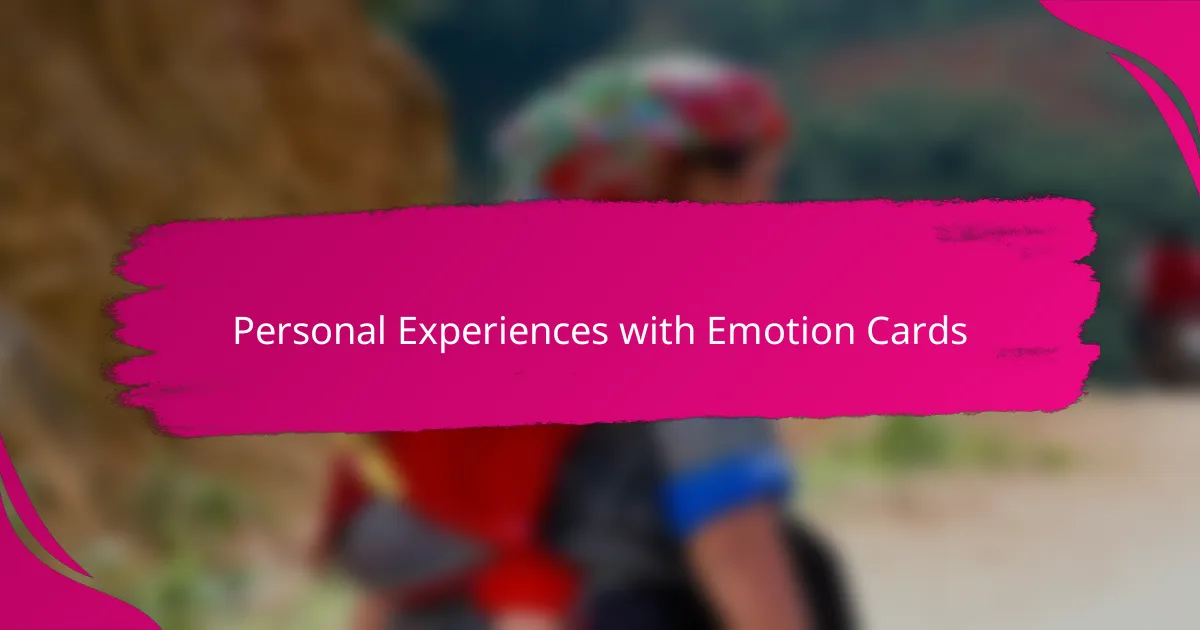
Personal Experiences with Emotion Cards
One moment that sticks with me is when my son, usually so quiet about his feelings, surprised me by holding up the “angry” card after a frustrating afternoon. It was such a relief to see him use the card instead of bottling things up or exploding in tears. Have you ever felt that mix of pride and gratitude when your child finds a new way to express themselves?
There was also a time when my daughter used the “confused” card during homework time, something she never vocalized before. That simple gesture opened up a conversation about what was really bothering her—and it changed how I approached helping her. It made me realize how much these cards do more than just label feelings; they create real understanding.
Of course, not every experience has been smooth. Sometimes my child picks a card randomly, and at first, I worried I was forcing something that wasn’t there. But now I see those moments as invitations—little cracks in the emotional armor that encourage us to dig deeper. Have you noticed how uncertainty can sometimes be the quietest cry for connection?
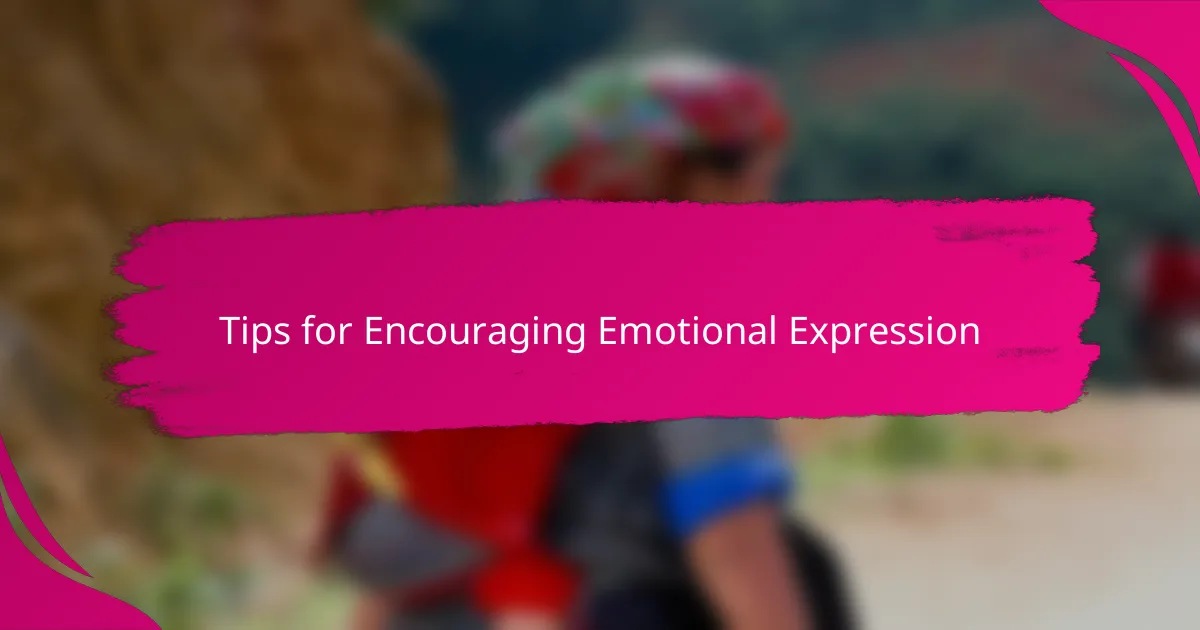
Tips for Encouraging Emotional Expression
One thing I’ve found helpful is to celebrate every small attempt my child makes at using the emotion cards. Even when they point to a card with just a glance, I respond with curiosity—“What’s making you feel this way?”—instead of rushing on. It’s amazing how that gentle attention encourages more sharing without pressure. Have you noticed how children open up best when they don’t feel judged or hurried?
Another tip is to make the process playful and lighthearted. Sometimes I turn the emotion cards into a game, asking my child to guess which card matches a silly story or a character from a book. This approach removes any tension and shows that emotions aren’t always heavy or scary—they’re part of everyday fun. Could mixing play with feelings be the secret to keeping kids engaged?
I also remind myself to be patient with silences or vague answers when we use the cards. In those quiet moments, I resist the urge to fill the space immediately and instead offer a comforting presence. From experience, I’ve learned that kids sometimes need time to find the right words or simply feel heard without pressure. Have you found that patience often speaks louder than questions when encouraging emotional expression?
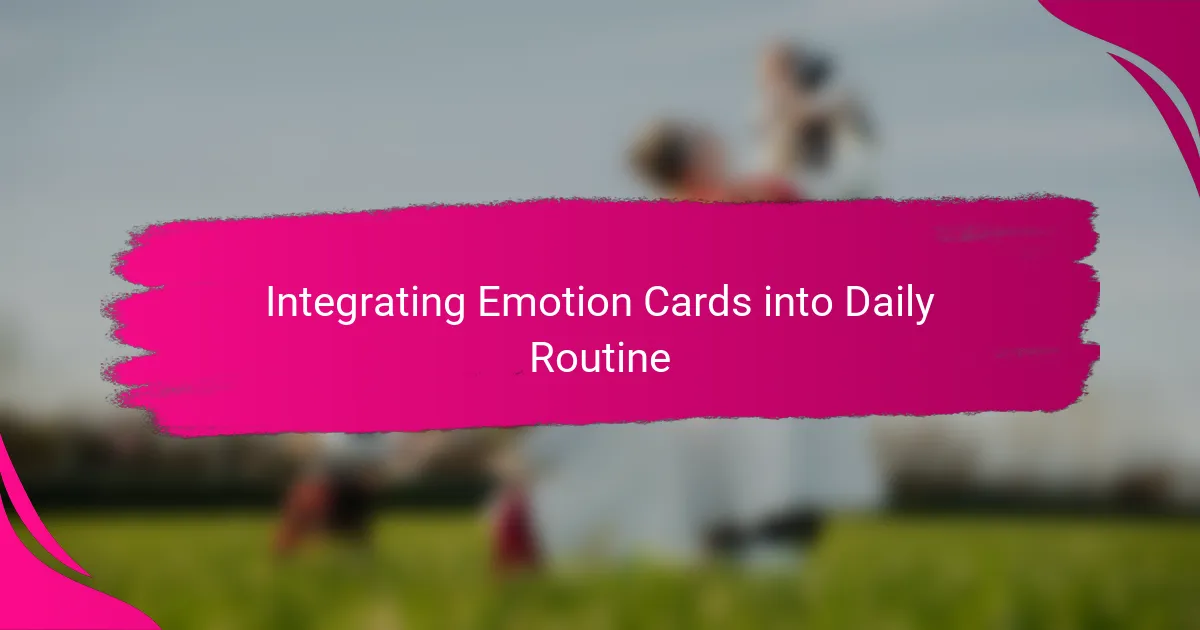
Integrating Emotion Cards into Daily Routine
Integrating emotion cards into daily routines doesn’t have to be complicated—I like to weave them into moments we already share, like during breakfast or while waiting in the car. It feels natural, almost like we’re just chatting, and yet those brief check-ins create a steady rhythm where emotions get named and noticed without pressure. Have you ever found that the simplest habits make the biggest difference over time?
Sometimes, right before bedtime, I pull out the cards and ask my child to pick one that shows how their day felt. These little rituals have become a comforting way to slow down and connect, turning something as ordinary as bedtime into a meaningful reflection. I’ve noticed that this gentle practice not only helps my child feel seen but also makes emotional expression a part of our daily life rather than a special event.
Of course, there are days when the routine slips or the cards are ignored, and that’s okay. I remind myself that consistency doesn’t mean perfection—it’s about showing up enough so my child knows these tools are always there when feelings need a voice. Have you discovered your own simple ways to keep emotional check-ins effortless and ongoing?
